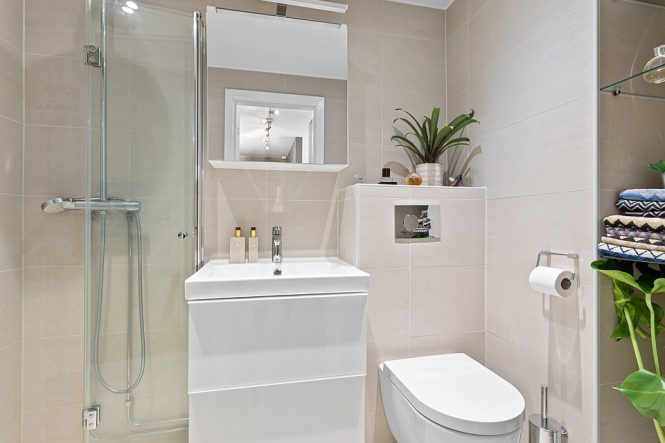
The Science of Cabinet Design: Understanding the Psychology of Storage and Space
When it comes to designing a functional and efficient living or working space, cabinetry plays a crucial role. Cabinets are not just mere storage units; they are an integral part of the overall aesthetic and usability of a room. The science of cabinet design is a complex field that involves understanding the psychology of storage and space, as well as the physical and emotional needs of users. In this article, we will delve into the world of cabinet design, exploring the key principles and considerations that underlie this multifaceted discipline.
The Psychology of Storage
Storage is a fundamental human need, and cabinets are designed to fulfill this need. However, the way we store and organize our belongings is closely tied to our psychological and emotional well-being. Research has shown that cluttered and disorganized spaces can lead to increased stress levels, decreased productivity, and a sense of overwhelm. On the other hand, well-designed cabinets and storage systems can promote a sense of calm, reduce anxiety, and even improve cognitive function.
One key concept in the psychology of storage is the idea of “visual noise.” Visual noise refers to the distracting and overwhelming visual stimuli that can arise from cluttered and disorganized spaces. When we are surrounded by too many visual cues, our brains can become overwhelmed, leading to decreased focus and increased stress. Well-designed cabinets can help mitigate visual noise by providing a clean and organized storage solution, allowing us to focus on the tasks at hand.
The Importance of Ergonomics
Ergonomics plays a critical role in cabinet design, as it directly affects the user experience. Cabinets that are designed with ergonomics in mind take into account the physical and cognitive needs of users, providing a comfortable and intuitive storage solution. For example, cabinets with adjustable shelves and drawers can accommodate users of different heights and abilities, while soft-close drawers and doors can reduce noise and improve overall usability.
The Role of Space Perception
Space perception is another key aspect of cabinet design, as it directly affects our perception of the room and our ability to navigate it. Research has shown that our brains use visual cues, such as lines, shapes, and textures, to perceive and understand space. Well-designed cabinets can help create a sense of flow and continuity in a room, while poorly designed cabinets can create visual barriers and disrupt the sense of space.
Key Principles of Cabinet Design
So, what are the key principles of cabinet design that underlie the science of storage and space? Some of the most important considerations include:
- Functionality: Cabinets should be designed to fulfill a specific function or need, whether it’s storing kitchen utensils, office supplies, or personal belongings.
- Ergonomics: Cabinets should be designed with ergonomics in mind, taking into account the physical and cognitive needs of users.
- Visual aesthetics: Cabinets should be designed to complement the overall aesthetic of the room, using materials, colors, and textures that enhance the visual appeal of the space.
- Space efficiency: Cabinets should be designed to maximize storage capacity while minimizing visual noise and disrupting the sense of space.
- Sustainability: Cabinets should be designed with sustainability in mind, using materials and manufacturing processes that minimize environmental impact.
Case Studies: Successful Cabinet Design
Several case studies demonstrate the successful application of the principles outlined above. For example, a well-designed kitchen cabinet system can improve the functionality and usability of the kitchen, while also enhancing the overall aesthetic of the room. Similarly, a custom-designed closet system can provide a tailored storage solution for personal belongings, reducing clutter and improving the sense of calm in the bedroom.
Conclusion
The science of cabinet design is a complex and multifaceted field that involves understanding the psychology of storage and space, as well as the physical and emotional needs of users. By applying key principles such as functionality, ergonomics, visual aesthetics, space efficiency, and sustainability, designers can create cabinets that not only provide a practical storage solution but also promote a sense of calm, reduce anxiety, and improve overall well-being. Whether you’re designing a new kitchen, office, or bedroom, the science of cabinet design is an essential consideration that can make all the difference in creating a functional, efficient, and beautiful space.
To further illustrate the concepts, let’s consider a simple mathematical model of storage capacity: $V = l \times w \times h$, where $V$ is the volume of the cabinet, $l$ is the length, $w$ is the width, and $h$ is the height. This model can be used to optimize the design of a cabinet, taking into account the available space and the storage needs of the user. For example, if we want to maximize the storage capacity of a cabinet, we can use the following equation: $V_{max} = \max(l \times w \times h)$, subject to the constraints of the available space and the user’s needs.
By combining the principles of cabinet design with mathematical models and psychological insights, we can create storage solutions that are not only functional and efficient but also beautiful and uplifting.